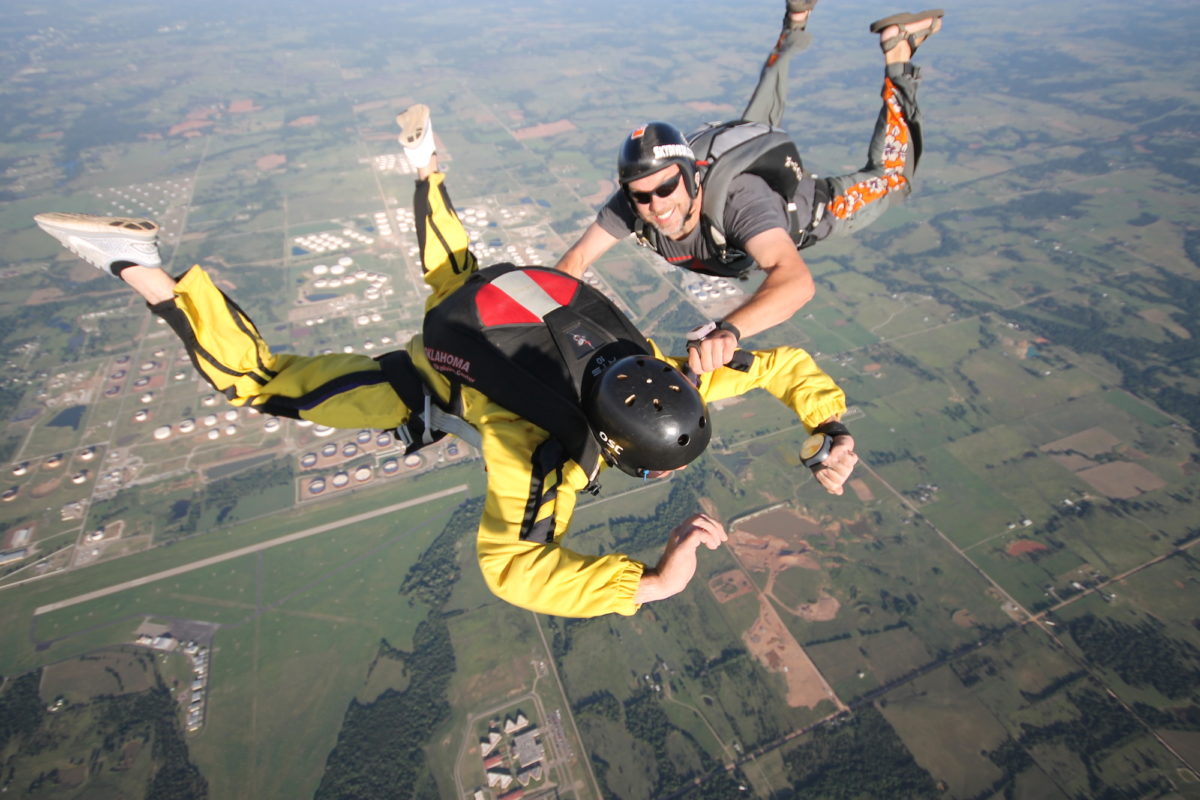How Fast Do You Fall When Skydiving
Monday, April 12, 2021
https://www.facebook.com/OklahomaSkydivingCenter/
The speed you fall at when you are skydiving depends on a few different things. The terminal velocity of an object is not a set speed, but a combination of how big and heavy it is (faster) and how much drag its shape creates (slower).
The most common number you are likely to hear in relation to skydiving is 120mph. This is a useful number as it represents the average speed that people fall at when ‘belly to earth’ – the position you most likely to think of when you imagine somebody skydiving. ‘Belly flying’ or ‘flat flying’ is what you learn first as it is a relatively simple and very stable position that keeps you the right way up (with your parachute on your back pointing at the sky). For these reasons it is also the orientation used for tandem skydiving – with the student in the lower position and the instructor the higher.

Discipline
The way you are falling also affects how fast you go, and skydivers pursue a variety of different disciplines that have different general speeds:
Freeflyers use complex body positions to fly together in different orientations, most commonly head-up and head-down. When your body is vertical in these positions and you use your limbs for drag and control, the average speed is higher – usually around 160mph.
Speed Skydivers simply try to fall as fast as possible. By pointing their heads at the ground and streamlining everything else, they can achieve much higher speeds. The current world record is 373.6mph – straight at the ground and measured over a vertical kilometer.
Wingsuits are made to decrease your fall rate and turn you into a human flying machine. Modern designs are very good at flying, but as they are unpowered and still use gravity to create movement, they still also count as falling. Good wingsuit pilots can achieve a glide ratio of up to four feet forward for every foot lost in height, resulting in a descent speed of about 40mph – but also a typical forward speed of 120mph.
Altitude
The important thing to know about freefall speed is that it is that the faster you go the sooner you need to open your parachute. Opening altitude is most often between 3000ft and 5000ft – giving you a few minutes of canopy flight before you are back on the ground. Freefall is the best part of skydiving, and there are two ways to get more of it – go again or jump from higher up.
Again and Again: It is very common to want more as soon as you land. If you have just completed a tandem skydive and want to go again, we are happy to take you back up. Another way is to become a skydiver yourself, join our community and gain access to the sky all the time!
More Altitude: The way to get more freefall time in a single jump is to simply go from higher up. Here at Oklahoma Skydiving Centre we have a fast, powerful plane that is able to offer you the maximum 14’000ft – the only skydiving centre in the region to go this high every day.
Even More Altitude: On Friday and Saturday evenings we go even higher. The USPA (United States Parachute Association) rules require supplemental oxygen for jumps over 15’000ft, which requires a bit of extra effort to arrange – but we like the extra freefall time enough to make it happen.
However and whichever way you do skydiving, it is awesome – and we want as many people as possible to experience it. Join us here as Oklahoma Skydiving Center, where we have everything to help you experience freefall for the first time, or to set you on the path to get a license of your very own.
Copyright © 2025, Oklahoma Skydiving Center, All Rights Reserved.
DropZone Web Design & Marketing by Beyond Marketing, LLC





